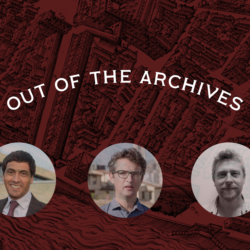Covid-19 fuelled and shaped many of our digital technology trends in 2021, accelerating transformation by a staggering three to seven years in just a few months.
2022 will be yet another year of unbelievably rapid change and we are excited by the trends that are already starting to gain momentum and emerge. From circular economy solutions and innovations in hydrogen, to virtual experiences and the future of the metaverse, here are the Calvium team’s tech predictions for 2022.
Climate consciousness
Climate consciousness and the race to achieve net zero is fast rising up the agenda, which will drive a significant shift in market trends, consumer behaviour and the use of technology over the next 12 months.
While increased concern over energy-hungry digital technologies like Blockchain is likely to encourage further developments of alternative and existing security technologies, growing efforts from organisations and individuals to go CO2-neutral will see marked growth in the number of companies offering simple carbon offset and footprint reduction services.
We expect to see growing grassroots interest in circular economy solutions, too, as the high expense of upgrading and desire to prolong the use of existing digital technology drives the move away from ownership of digital goods and gives rise to fixing, maintenance and rental services.
As part of this growing appetite for circular economy solutions, alongside increased investment and improved technology for recycling, there will also be a shift towards lithium battery recycling and the use of longer-lasting solid-state batteries for powering digital tools. Nissan and Toyota are already developing battery technologies that could completely transform the market. This will no doubt spur experimentation among competitors that want to be seen at the forefront of developing environmentally-friendly solutions.
More broadly, recycling will improve, increase and become more complex. We see it becoming much more like Japan’s world-beating recycling model, where some towns have as many as 45 separate categories for rubbish.

Meanwhile, as the chip shortage begins to lift over the coming months, attitudinal changes among increasingly climate conscious consumers will put a much greater emphasis on extending the life of hardware and supporting older technology for longer. With the cost of buying new technology becoming ever more expensive (Apple’s latest iPhone 13 Pro costs over £1,000), consumers will prefer to have software that runs slower on current or older hardware rather than racing to upgrade to the newest and fastest hardware.
Hydrogen
Increased pressure from the aviation sector and public demand will see hydrogen deployment and supporting technologies gain significant momentum this year, with some forecasts predicting the hydrogen economy will be worth $11tr in 2022 and that hydrogen stocks will soar by thousands of per cent.
While we don’t see hydrogen reaching a tipping point in end-user delivery just yet – broadly or publicly – we do believe its capability and results from research will be realised this year and this will see hydrogen become a much more practical option to enable a broader uptake in years to come – particularly in the transport sector. Digital technologies will be foundational to the rollout, delivery and management of hydrogen fuel solutions.
The UK is fast ramping up its production and use of hydrogen as part of its transition to net zero, with the government set to launch its £240m Net Zero Hydrogen Fund in early 2022.
In our very own Bristol, which is where Calvium HQ is based, Bristol Airport recently joined a newly-formed consortium which aims to develop an ecosystem for hydrogen in the region. We look forward to seeing how this paves the way for the wider sector in the coming years, as well as how it might be used for other services and requirements such as running buses and trains, and heating homes.
Metaverse
There is a lot of hype around the ‘metaverse’ right now and we don’t expect this to die down any time soon. Despite this, we don’t see there being much consumer interest in the metaverse – not even for the Facebook-specific version, largely for the reason that people often want online to have to a very different environment and identity to their everyday (think dragons and anime characters).
As with all ‘new’ tech, there will be some commercial interest and there will no doubt be a host of interested companies setting up stores, especially as they require very little investment, however we don’t foresee these taking off. There have been many metaverse predecessors – take Second Life, for example – which are now small after an initial boom. They have all had their day for one reason or another; whether through being too easy to be hacked or because they are simply too processor heavy.

Rather than one metaverse, we instead expect there will be many and with other commercial platforms available for different purposes and communities. LabLinks is a great example of a secure, flexible online social environment. What makes LabLinks distinct from the many social media platforms already out there is that it allows users – pharmaceutical professionals, in this instance – to engage with others in multiple ways and in multiple environments all in one platform. They can choose how they interact – in message areas for asynchronous communication, in collaborative spaces for realtime contributions, and also in a virtual event hall for live talks and naturalistic networking. We foresee continued development in virtual social spaces, but not necessarily on one monolithic platform.
Virtual experiences
Virtual reality has been promising to revolutionise gaming for some years now, yet we expect the uptake of VR will continue to lag behind the growth in interest for gaming and play. Not only does VR require high-end and expensive computer hardware, it also requires physical space so as to not bump into others. Xboxes and PlayStations definitely don’t have anything to worry about any time soon.
What we do expect to see become ever more common are blended experiences like The Lost Palace, which combine technologies such as bespoke handheld devices, binaural 3D sound and haptic tech to create immersive augmented experiences. These will increasingly be expected by visitors of venues and locations, especially as places and attractions start to open up again and pandemic restrictions loosen.
There will no doubt be further experiments with VR glasses, like we have recently seen with Facebook and Ray-Ban’s launch of ‘Ray-Ban Stories’ and like we are expecting to see from Apple some time this year. Again, we expect there will be limited public uptake of smart glasses for the same reason Google Glasses didn’t take off.
They all have the same intrinsic problem in that a camera records people in a public space without their consent. In a privacy-first era, VR glasses won’t sit easy with the majority of people in Western societies – no matter how much Facebook maintains Ray-Ban Stories have been “designed with privacy in mind”.
Further trends
We anticipate there will be continued growth in software as a service (SaaS), which is set to see investments increase 12% year on year to reach $141bn in 2022. Artificial intelligence and machine learning will become increasingly sophisticated in this area over the coming year, allowing companies to vastly improve their products and services, as well as gain a deeper understanding of their customers.

Meanwhile, Order at Table apps that have flourished during the pandemic will expand and evolve as companies realise these new digital behaviours are here to stay. The most successful players will ensure they have a frictionless product offering and differentiated customer experience, whether through integrating tipping and click & collect features or offering bespoke promotions.
Finally, we anticipate the Non-Fungible Token (NFT) market will fold. Laws are already cracking down on the traceability of funds, money laundering has emerged as a significant threat and the market bubble has burst. The biggest NFT platform is still yet to recover from the crypto crash in September 2021 and that is a warning sign to the rest of the market if ever we did see one.
Final thoughts
Covid-19 will continue to impact our use of technology and digital behaviours over the coming year and the long-awaited promise of 5G will only accelerate this. This makes 2022 a year that is ripe for disruption and we look forward to seeing how the landscape unfolds and evolves – hopefully in a more sustainable and climate-friendly way.
Whatever happens, we’re sure the internet will still have plenty of videos of cats and puppies in hammocks, while we’ll be working hard to push the boundaries of possibility for digital technologies and digital placemaking, which has an especially exciting and transformative role to play as we emerge from the pandemic.
We’d love to hear what you think about our selection of trends for 2022 and if there are any you think we’ve overlooked. Please do get in touch to let us know.








